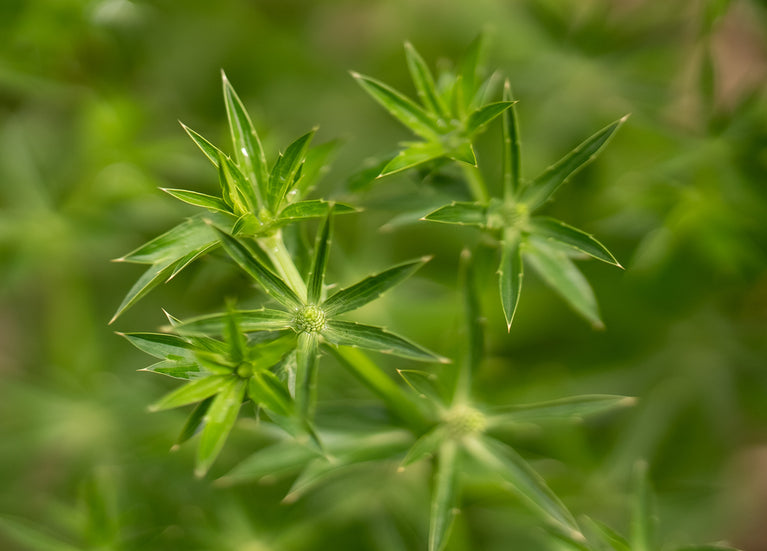How to Prune your Herbs

Why prune your herbs?
I prune my herbs to keep them happy, healthy, and looking good. Pruning is often done when I am picking them for use. Frequent use of herbs not only makes our meals much tastier and more nutritious, but it also produces strong, bushy plants. It's best to prune them a little and often.
Over the years I have had many people tell me that their herbs are long and straggly, with not many leaves. There can be a couple of reasons for this (such as lack of light or fertiliser) but more often than not it is that they are not being harvested or pruned properly.
Herbs can usually be pruned while harvesting for use. This is often enough to keep the plant healthy and bushy. However, if you are not getting around to using all of your herbs (especially if you have a lot of herbs), you may need to prune as well. For example, when cutting thyme for my breakfast mushrooms, if the plant looks like it needs more cut off than I can use, I will still cut more to encourage softer new growth and avoid a woody plant.
When to prune your herbs
Midmorning is the best time of day to prune herbs for adding to meals or for medicinal uses. The morning dew has dried, and the herbs have not yet been exposed to the heat of the day. This will help to retain the scent and colour of the herbs.
- A sunny day is preferable for pruning herbs; the morning sun enlivens the herbs with its energy, activating the aromatic oils within the plant.
- Rain can make plants excessively wet, and some leaves retain a lot of moisture. This can lead to damage when overhandling, and the herbs may lose their aroma.
- Avoid pruning in the middle or afternoon of a hot day, as the leaves and flowers will be beginning to fade.
- When picking herbs for a salad it is best to pick them in the morning as later in the day they may be wilted from the hot sun.
How to prune your herbs?
Plants grow upwards and outwards because growth hormones concentrate at the ends of the growing shoots, suppressing the development of buds elsewhere. Cutting off (pruning) a growing tip redirects the plant's energies to lower buds and stimulates them into growth as replacements for the lost leading shoot. This leads to bushier plants and prevents them from becoming woody and or sparse.
General Pruning Tips
- Always use clean, sharp scissors, trimmers or secateurs. This helps to make clean cuts, prevent damage to the plants and reduces the risk of disease.
- As a general rule, never remove more than one-third of the plant at a time. Taking too much can stress the plant.
- Plants require some leaves on their stems to photosynthesize and create new growth. Always make sure to leave some green growth.
- Once some herbs are past their best, often after flowering, it is a good idea to give them a hard cutback to encourage fresh growth and give the plant a better shape.
- Perennial herbs will generally need a hard cutback once a year.
Cutting back Bushy Herbs that produce their leaves on Stems
These include but are not limited to:
- Amaranth
- Basil
- Bay tree
- Catnip
- Chillies
- Curry plant
- Damiana
- Jasmine sambac
- Lavender family
- Lemon Balm
- Lemon Verbena
- Mint family
- Mugwort
- Mushroom plant
- Rosemary
- Sage
- Saltbush
- Salvias
- Sambung
- Scented geraniums
- Shiso/perilla
When picking these herbs, never rip leaves from the plant. Instead, cut the stem back to above a leaf node with signs of life, and the plant will then bush out from this area. Then, you can remove the leaves from the stem that you have cut off and use them in your meals.


Note: Handle the cut herb as little as possible, to avoid bruising, particularly with the more succulent herbs, such as basil.
Avoid cutting back into brown hard stems as your herb may not recover it is preferable to prune lightly and regularly to keep your herbs looking fresh and bushy.
Cutting back small-leaved herbs that produce their leaves close together on stems
These include but are not limited to:
- Brahmi
- Chamomile Lawn
- Marjoram
- Moneywort
- Oregano Family
- Thyme Family
- Rupturewort
- Savory Family
- Speedwell
Smaller leaved herbs can be cut in one motion across a large portion of the plant a bit like giving it a haircut. There is not so much concern for finding the nodes as there are many along the stem.


Note: You can mow a thyme lawn or a chamomile lawn to remove some of the top foliage and limit upward growth and encourage bushy side shoots.
How to prune herbs that grow in a rosette
Herbs that grow in a rosette produce new growth from the centre of the plant. These include but are not limited to:
- Aloe
- Angelica
- Asian greens
- Chervil
- Chicory family
- Comfrey
- Coriander
- Dandelion
- Dill
- Fennel
- Lovage
- Parsley
- Salad burnet
- Sorrel
- Upland cress

Note: Take care when pulling the stems off fine herbs like dill and chervil you may want to use scissors to cut these ones or pinch them off with your fingernails.
Cutting herbs that grow in clumps
The leaves come up from the ground like tufts of grass. These include but are not limited to:





